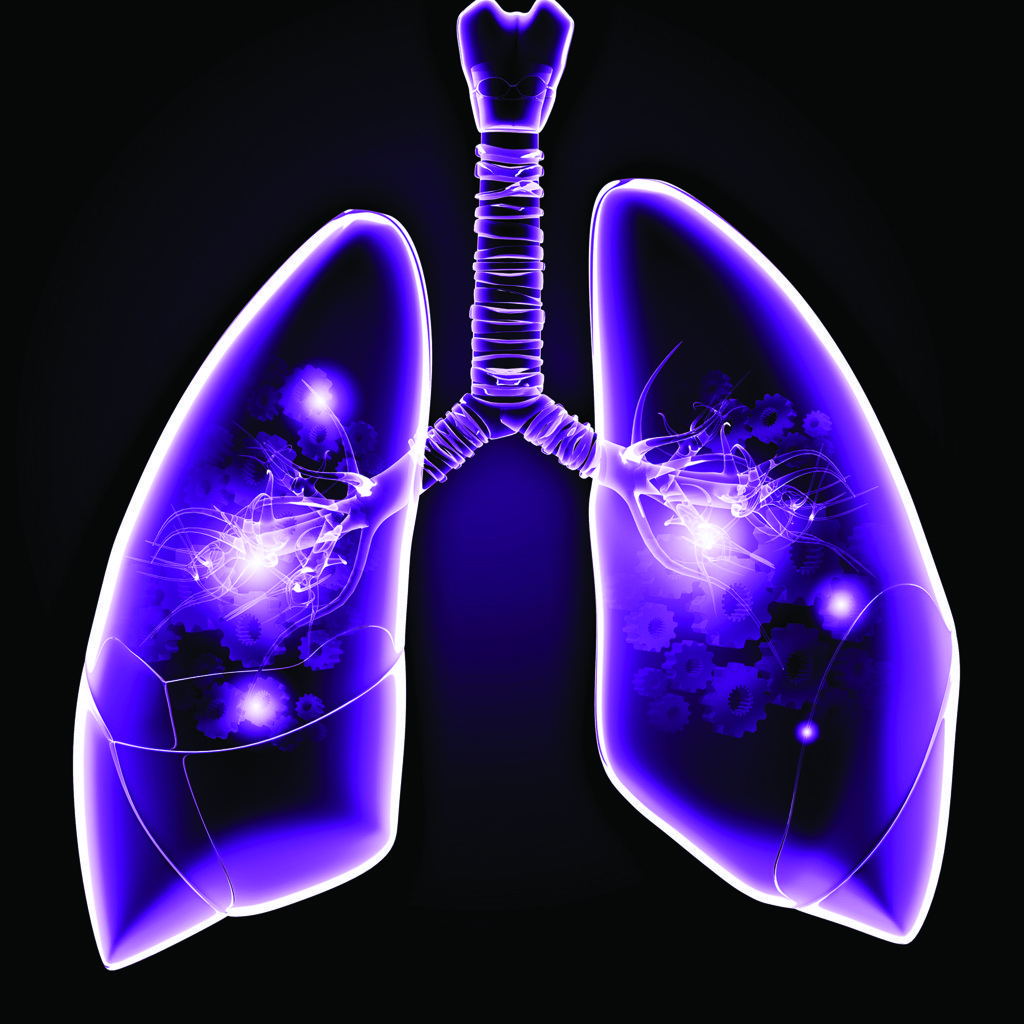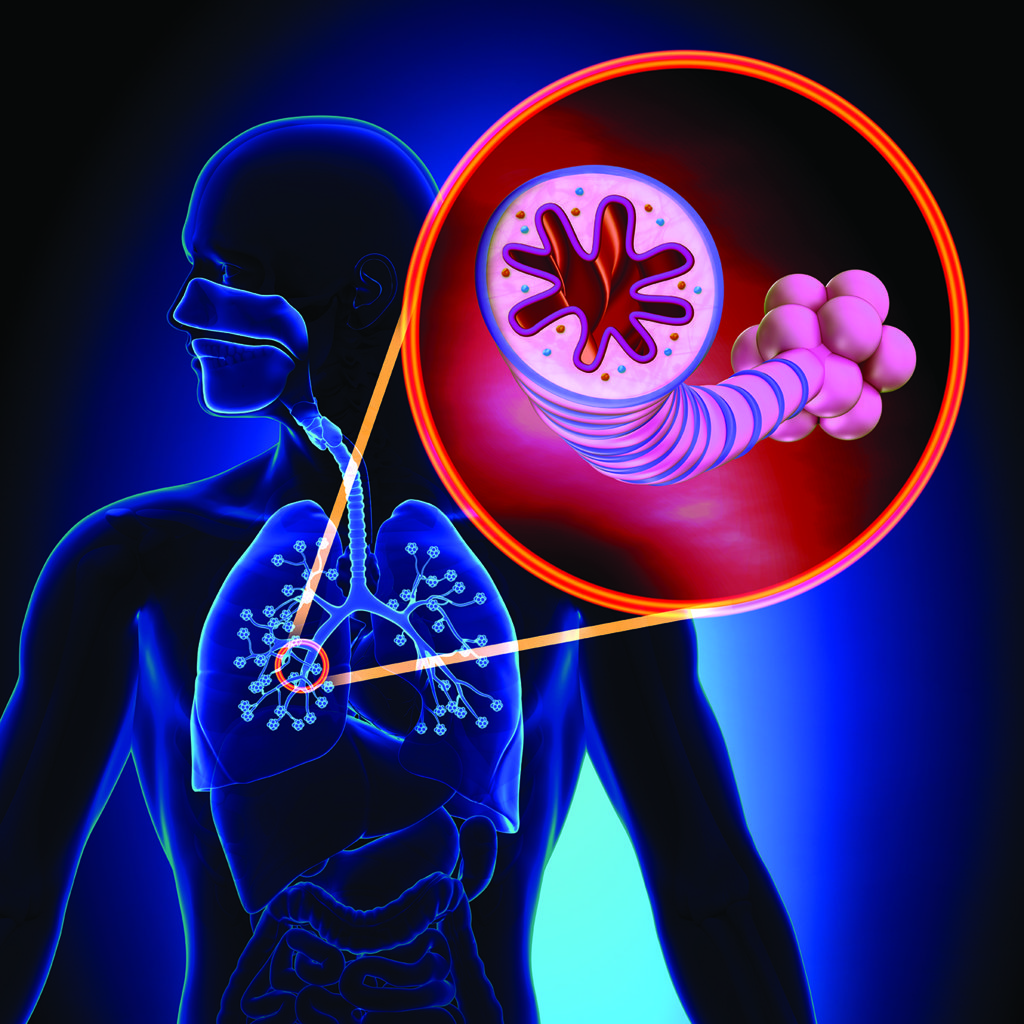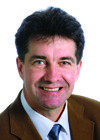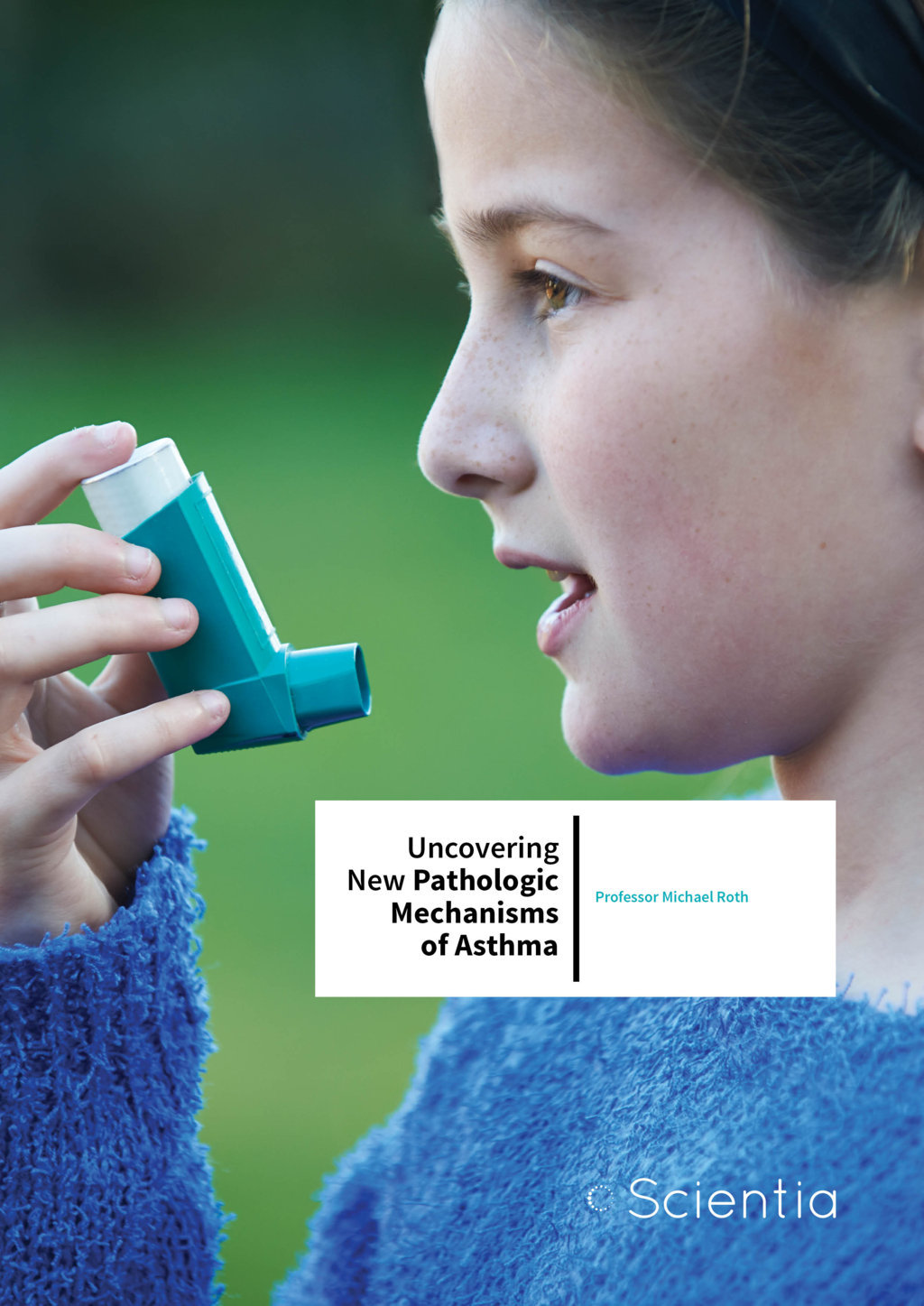Professor Michael Roth – Uncovering New Pathologic Mechanisms of Asthma
Professor Michael Roth, Head of the Pulmonary Cell Research unit at the University Hospital Basel, Switzerland, has been investigating the pathologic causative mechanisms behind asthma and COPD for the last 30 years, with the aim of developing novel treatments for these ailments.
The incidence of respiratory conditions such as asthma has been on the rise over the past 40 years, potentially due to factors including air pollution and smoking. Out of the global population, 234 million people suffer from asthma, thus making it the most common chronic inflammatory lung disease. Half of all sufferers are children, and unfortunately, no cure is currently available. Because of the large number of children with asthma, the condition is the most frequent cause of absence from school, and has a significant negative impact on children’s quality of life. Adult asthma can be caused by working conditions (baker, miller, construction and metal dust) or can be initiated by hormonal changes after menopause in women. Thus, asthma significantly affects social and working life and patients need to adapt their daily life to their condition.
Although many different types of asthma medications exist, they are only palliative and don’t actually cure the disease. Their mechanism of action allows the symptoms of the condition to be alleviated, by reducing inflammation and relaxing the tightened airways so that normal airflow can resume.
Although current treatments can effectively relax the airways, they lack the capacity to improve the structural modification present in the walls of the airways – known as remodelling – that causes thickening of the airway walls resulting in permanent airflow restriction. At this point, a major factor standing in the way of a cure is our insufficient understanding of the interaction between the airway structure and the inflammatory processes in the lung. Instead of resulting from chronic inflammation, the remodelling of airways in asthma patients often appears before inflammation, and in fact can trigger inflammatory processes. Consequently, researchers have concluded that our only hope for curing asthma lies in understanding the pathology behind this initial airway remodelling. However, animal models that help scientists understand the phenomenon are extremely limited, as only certain aspects of the disease can be simulated, rather than the entire set of causes and symptoms.

‘Our research has opened new targets for curative therapeutic strategies for asthma’
The knowledge we currently possess stems from this line of research. In this vein, a significant discovery came from Professor Michael Roth (University Hospital Basel, Switzerland) and his collaborators from the University of Sydney (Australia), University of Manitoba (Canada) and Jiaotong University (Xi’an, China). By comparing cells from healthy and diseased airways, they found that the most important contribution to the pathogenesis of asthma comes from the interaction of airway epithelial cells, fibroblasts and smooth muscle cells.

A Protein Puzzle
A crucial finding made by Professor Roth’s group was that the transcription factor and differentiation factor C/EBP-a was lacking in asthmatic airway smooth muscle cells. Moreover, the absence of the C/EBP-a transcription factor is not detectable by transcriptomic analysis, because it results from the faulty translation of RNA into the corresponding proteins. The background of this research was based on the premise that asthmatic patients often have increased muscle mass in their upper airways due to a proliferation of bronchial smoothmuscle cells. The smooth muscle cells of people without asthma are kept in check in terms of numbers by cortisone, an effect which is mediated by an interaction between the glucocorticoid receptor and C/ EBP-a. To test this premise, Professor Roth looked into the signalling pathway that controls the anti-proliferative effect that glucocorticoids have on smooth muscle cells and the synthesis of interleukin-6, which indicates inflammation, in bronchial smooth muscle cells in asthmatic patients and controls. The test compared isolated primary smooth muscle cells from 20 asthma patients, 8 patients suffering of emphysema and a control group of 26 people, to verify smooth muscle cell proliferation. During this experiment, the researchers found that the glucocorticoids only inhibited proliferation of smooth muscle cells in subjects without asthma and confirmed that the inhibition mechanism malfunctions in asthmatic patients. The C/EBP-a protein was found in all bronchial smooth-muscle cells from subjects without asthma but not in those with asthma, whereas the protein was expressed in the lymphocytes of both subject groups. Mifepristone, an inhibitor of glucocorticoid receptors, reversed the anti-proliferative effect of glucocorticoids in bronchial smooth muscle cells from subjects without asthma. When smooth muscle cells of asthmatic patients were transfected with an expression vector for human C/EBP-a, the administration of glucocorticoids inhibited cell proliferation. Therefore, the researchers proposed that the cell-specific absence of C/EBP-a causes the airways to produce increased numbers of smooth muscle cells. Moreover, this would explain why glucocorticoids administered in vitro fail to inhibit abnormal cell proliferation.
Although Professor Roth and his collaborators found clear evidence that the factors triggering asthma reduce the translation of C/EBP-a, the lasting effect only in the cells of asthma patients is still not well understood today.
Advances in the Biochemistry of Breathing
Professor Roth’s activity stretches back to 1998, when he was studying the signal transduction proteins isolated in human smooth muscle airway cells. His research attracted a flourishing collaboration with the Institute for Medical Research of the University of Sydney, Australia, where he was the first to identify the biomolecular basis of the improved action of inhaled combined steroids and long acting ß2 adrenergic receptor agonists that cause relaxation of smooth muscle. Thus, he found that the effect is given by two transcription factors, a glucocorticoid receptor and C/EBP-a, working in synchronicity.
In 2004, he became the part-time Head of the Molecular Medicine division at the Woolcock Institute for Medical Research of the University of Sydney, Australia, while retaining his role as the Head of the Pulmonary Cell Research group at the University Hospital Basel. ‘The collaboration of the two institutes produced more publications in leading peer reviewed scientific journals in which we described new pathologies of asthmatic airway smooth muscle cells and which could be linked to the lack of C/EBP-a,’ Professor Roth explains. ‘In regard to asthma research, our studies formed the basis for several other research groups to investigate the role of tissue forming airway cells in the pathogenesis of asthma and COPD.’
Between 2010 and 2013, Professor Roth worked on the intracellular signalling related to the regulation of translation control, which was the cause of the lack of C/EBP-a specific to asthma airway smooth muscle cells. In 2010, he presented his work on chronic obstructive pulmonary disease and asthma in China, at the Fourth Military Medical University and Xijing Hospital. Later on, his work granted him a Chinese governmental scholarship, who sent researchers to Basel for Professor Roth to train in basic medical studies. In 2012, his research results led to a fruitful collaboration with researchers from the University of Manitoba, Canada, who investigated the role of non-immunogenic immunoglobulin E antibodies in allergic asthma. These investigations have resulted in three peer reviewed papers published in renowned journals. In 2014, Professor Roth became one of the first Fellows of the European Respiratory Society for his lifelong contributions to respiratory medicine.

During the visit to China in 2010, Professor Roth was invited by Professor Lu, another leading asthma researcher, to present his work at the Xi’an Jiaotong University. Their collaboration has continued for the past six years and has resulted in confirming an animal model for acute and chronic lung inflammation. ‘The studies showed that a histone modifying protein, PRMT1, was essential for structural changes of the airway wall under inflammatory conditions,’ Professor Roth explains. PRMT1 or protein arginine N-methyltransferase 1 is an enzyme produced from the PRMT1 gene. The PRMT1 enzyme is seen today as the main regulator for tissue remodelling in several abnormal processes involved in pathogenesis. Crucially, PRMT1 controls the production of C/EBP-a and is regulated by C/EBPs – this may explain the role of C/EBP-a in asthma. Another consequence of the activity of PRMT1 is the presence of hyperactive mitochondria in the airway cells, which has been reported by other asthma researchers, but the cause has remained unknown.
The latest research performed by Professor Roth and his team showed that when C/ EBP-a is down-regulated and therefore absent from tissue, C/EBP-a will take its place in the DNA binding sequence of microRNA-19a. This replacement increases the production of Erk1/2 MAPK and PRMT1, the former being protein kinases involved in growth factors signalling and therefore up-regulating cell production, and the latter being the enzyme previously discussed. Because these factors are up-regulated and hence their production increases, they stimulate asthma airway smooth muscle cells to proliferate, secrete more proinflammatory cytokines attracting immune cells, and produce more pro-inflammatory extracellular matrix components. Growth factors favouring inflammation have the ability to decrease the production of C/ EBP-a and increase that of C/EBP-a. This phenomenon describes a self-stimulating pathway for asthmatic airway smooth muscle cells. Given that Professor Roth identified and documented this pathway, the knowledge offers a target for strategies to control the airway wall remodelling and inflammation present in asthma and give patients a chance at a normal life. As he points out: ‘at least in vitro, this circle can be broken and the pathology can be corrected on different levels. Therefore, our research has opened new targets for curative therapeutic strategies for asthma.’
The Next Steps in Asthma Research
From his previous findings, Professor Roth and his collaborators have been assessing whether the pathway enrolling immunoglobulin E antibodies merges with other different asthma triggers such as Erk1/2 MAPK and PRMT1. Among other future projects, the team are working on translational studies investigating the role of biomarkers of chronic obstructive pulmonary disease, an ailment affecting 65 million people worldwide, which also claimed the life of the beloved actor Leonard Nimoy.
Other targets for Professor Roth’s research are the involvement of the other four human PRMTs, and their regulation by signalling proteins in charge of forming the airway structure. ‘We want to find out if these proteins should be regarded as cause or result of the pathology of exacerbation in COPD,’ says Professor Roth.
Meet the researcher

Professor Michael Roth
Department of Biomedicine
University Hospital Basel
Basel
Switzerland
Professor Michael Roth is currently the group leader of the Pulmonary Cell Research unit for the Clinics of Pneumology at the University Hospital Basel, Switzerland. Prior to his current position as the Head of the Pulmonary Cell Research unit in Basel, Professor Roth held the position of Head of Molecular Medicine, Woolcock Institute of Medical Research in Sydney, Australia. His career spans more than 28 years of research in the fields of human biology, genetics, and molecular cell biology. Throughout this time, Professor Roth has authored more than one hundred peer reviewed publications. His prolific research and ground-breaking results have attracted over a dozen large grants that secured the continued funding of his scientific work.
CONTACT
E: michael.roth@usb.ch
W: https://biomedizin.unibas.ch/nc/about-us/people/profil/profile/ person/roth-3/
T: (+41) 61 265 2337
FUNDING
SNSF
Novartis-Foundation
Bangerter-Foundation
Helmut-Horten-Stiftung
FAG
OFID


